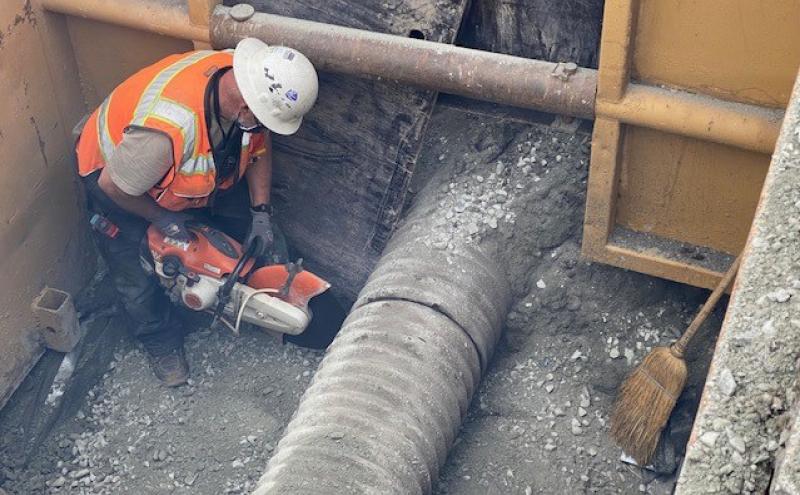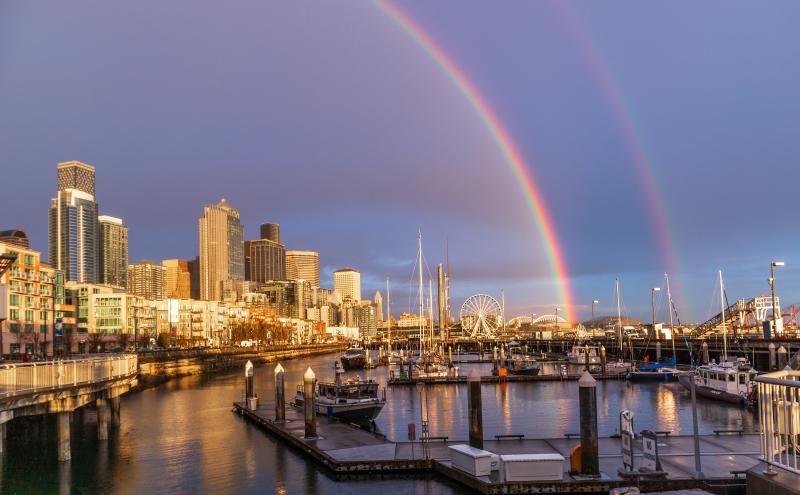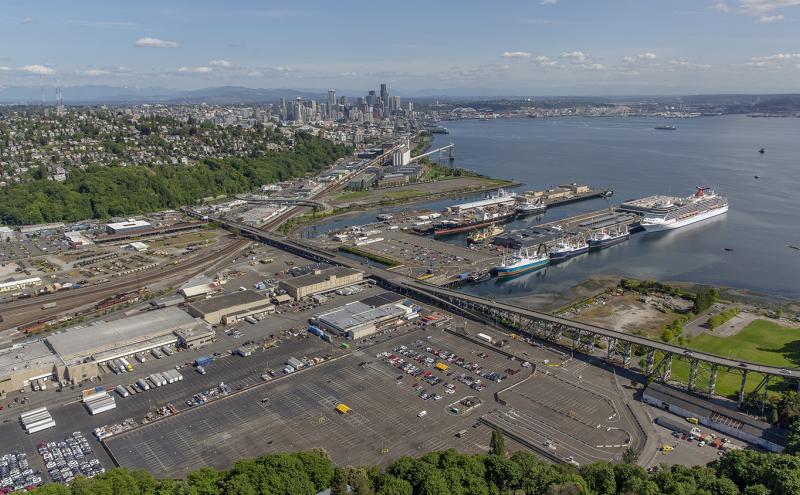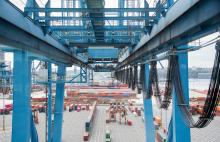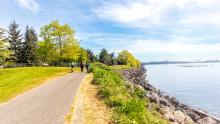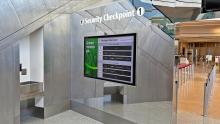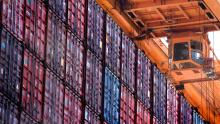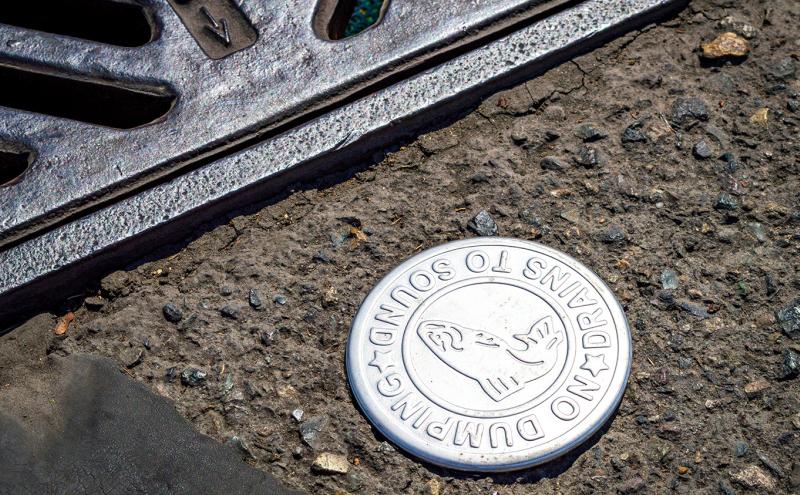
By Ondrej Sklenar, Port Environmental Program Manager
In 2014, the Port of Seattle became the first port in North America to establish and operate its own stormwater utility. The Marine Stormwater Utility (Utility) helps manage stormwater runoff from Port properties and complies with stringent federal, state, and local stormwater regulations. As an independent utility, the Port is able to better serve marine customers, improve water quality discharging into regional water bodies, and be a business line within the Port. Its customers are Port tenants, the Port itself, and the Northwest Seaport Alliance (NWSA).
In a typical Seattle year, one billion gallons of rainwater falls onto Port maritime properties. Water follows the path of least resistance, either infiltrating into the ground or flowing through pipes into local water bodies like Elliott Bay. Pollutants from roads, parking lots, and other hard surfaces can be transported downstream, negatively impacting the region’s precious ecosystems for salmon, orca, and other critical species. A well-functioning storm drainage system helps prevent localized ponding and flooding and can provide stormwater treatment to prevent pollutants from entering streams, bays, and Puget Sound.
The Utility network consists of 72 miles of storm drainage pipes, located across 1,000 acres and 32 maritime properties. These pipes convey water into the Lower Duwamish River, Salmon Bay, or Puget Sound. They are composed of over 4,500 segments ranging from 1- to 60-inches in diameter and from a few feet to over 600 feet in length. Some recently installed pipe segments are made of high strength ductile iron and are expected to last for 100 years, while pipes installed in the early 1900s, made of vitrified clay are nearing the end of their lifespan and need to be replaced. To ensure the resiliency of the stormwater system and maintain operations, the Port has set a goal to rehabilitate 75% of the stormwater system by 2035. We are on track to exceed that goal in the next few years.
Accessing and prioritizing rehabilitation
In 2020, the Maritime Stormwater team developed a rehabilitation scoring system to assess what work needed to be done. Using utility fees, the Port has updated condition tracking and purchased specialized equipment, including a closed-circuit television (CCTV) camera, truck, and software. These updates vastly improve the Port’s ability to identify and prioritize assets that need replacement.
Pipe scoring using CCTV
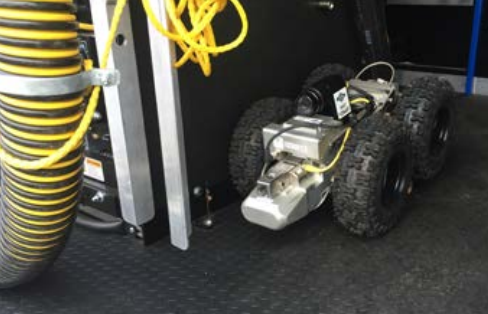
With the help of the CCTV truck and skilled operator, we gain access to underground pipes via a catch basin or maintenance hole. A CCTV camera is attached to a long cord that is inserted into and pushed through an underground pipe, obtaining video footage along the way. The operator analyzes the footage using custom software, identifying any defects such as cracks, fractures and joint offsets. Based on what the operator observes, the pipe is scored on a scale from 0 to 100. A lower score equates to a better pipe condition. Scores less than 50 are categorized as in “good” or “excellent” condition.
Asset planning using CCTV
The CCTV assessment enables Utility staff to understand current stormwater asset conditions. Pipes that are in good condition have a lower risk of failure and pipes in poor condition are identified for near-term repair or replacement. In general, the Utility repairs or replaces pipes with a score of 80 or greater. However, we also consider additional factors such as a project’s impact on tenants, the complexity of the repair or replacement, levels of soil contamination at the project site, and which body of water receives discharges.
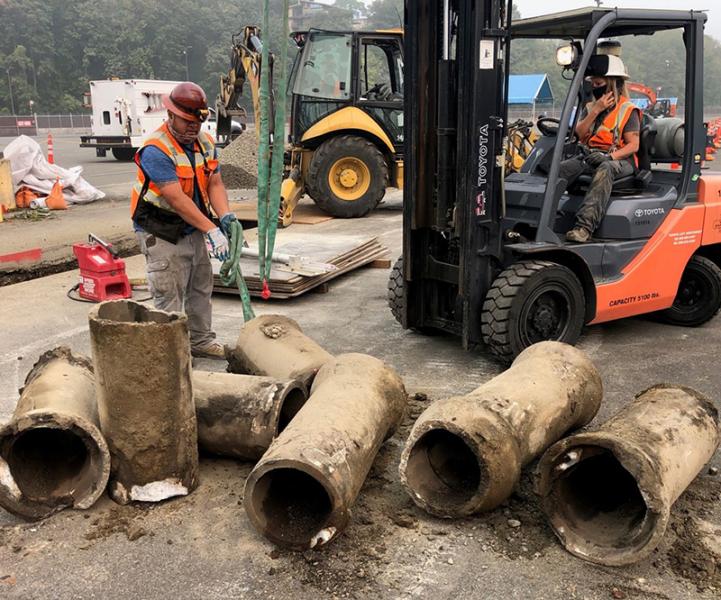
Continued Utility investments in pipe repair and replacement coupled with capital projects across maritime properties will increase system rehabilitation and resiliency of the stormwater system, helping to improve the quality of stormwater entering Puget Sound.
Subscribe to Evergreen for environmental updates from the Port of Seattle

